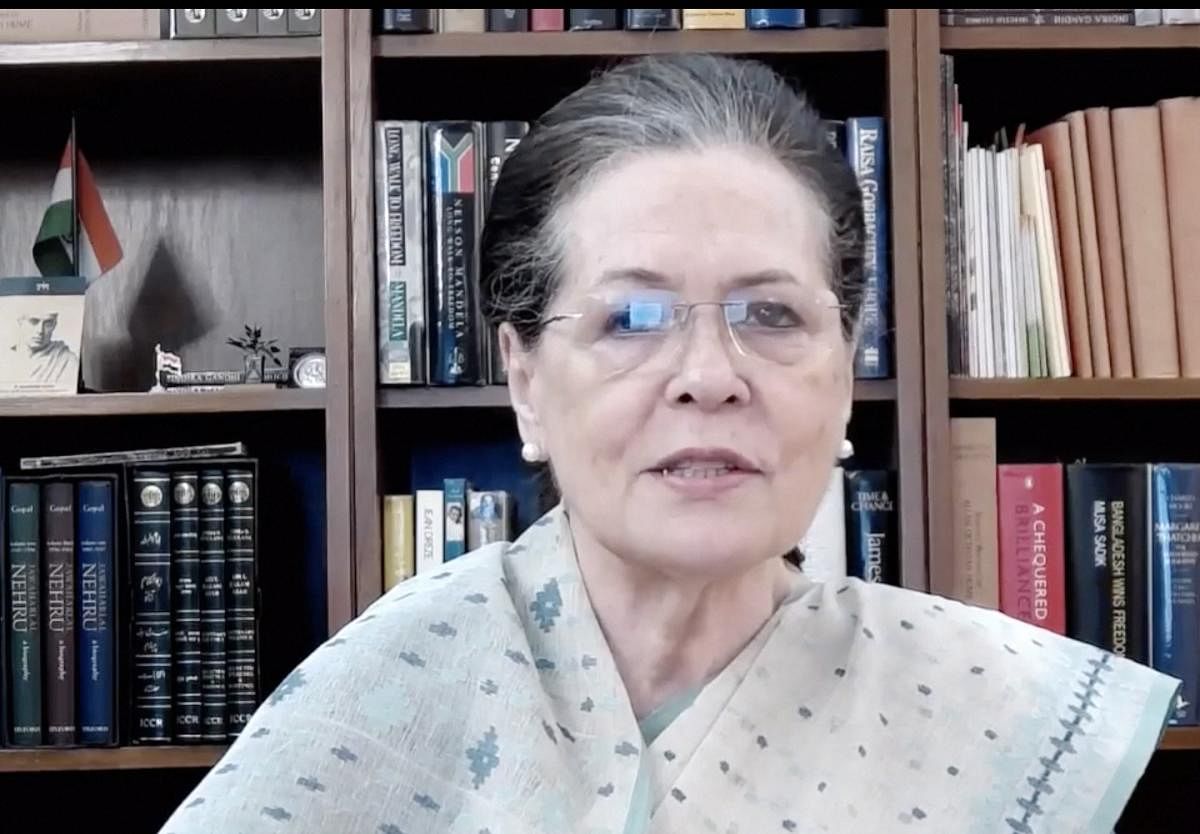
The significance of last Friday’s meeting of opposition parties, called by Congress president Sonia Gandhi, was that it was the first formal attempt made by the parties, with participation from the Congress, to form a common plank against the BJP. It is important that Sonia Gandhi took the initiative for such a meeting after some recent exploratory moves by other parties. Yashwant Sinha’s Rashtra Manch had convened a meeting of regional parties in June which was attended by leaders of eight parties, including the Trinamool Congress (TMC), the Samajwadi Party (SP), the Aam Aadmi Party (AAP), the Nationalist Congress Party (NCP) and the CPM. Last month, West Bengal Chief Minister and TMC leader Mamata Banerjee convened a meeting that put forward the idea of an opposition alliance for the 2024 general elections. There have also been informal gatherings and discussions on the theme.
Sonia Gandhi’s online meeting was attended by the top leaders of 18 parties, including Mamata Banerjee, the NCP’s Sharad Pawar, the DMK’s MK Stalin, the Shiv Sena’s Uddhav Thackeray, and the CPM’s Sitaram Yechury. It was the largest such gathering, and may signal the keenness of opposition parties to find a common ground. It might also show that no opposition unity would be effective without participation by the Congress. The Congress has been weakened, but it still remains a national party, with presence in all the states. It is the largest party after the BJP. Sonia Gandhi noted the “determined unity’’ of opposition parties during the monsoon session of Parliament as a welcome sign and said there is no alternative but to work together to pose a challenge to the NDA during the 2024 elections. The parties have called for a 10-day protest against the government in September.
They have a tough challenge before them, considering the political situation in the country. The Congress does not have a clear leadership and it is not known what position other parties would give it. Most other parties have following only in their own states or among certain groups and would not be able to help one another. Some of them are even rivals. But they have displayed a common intent to fight the BJP, and their joint statement has identified some issues, including the mismanagement of the Covid-19 pandemic, inflation, unemployment, farm laws and illegal surveillance of citizens. Some of these issues may fade away but others may remain relevant over the next three years. Parties will have to find common ground and forge unity in common action. But they will have to bury their narrow interests and go beyond a purely anti-BJP platform to present a positive political and governance agenda to the nation.